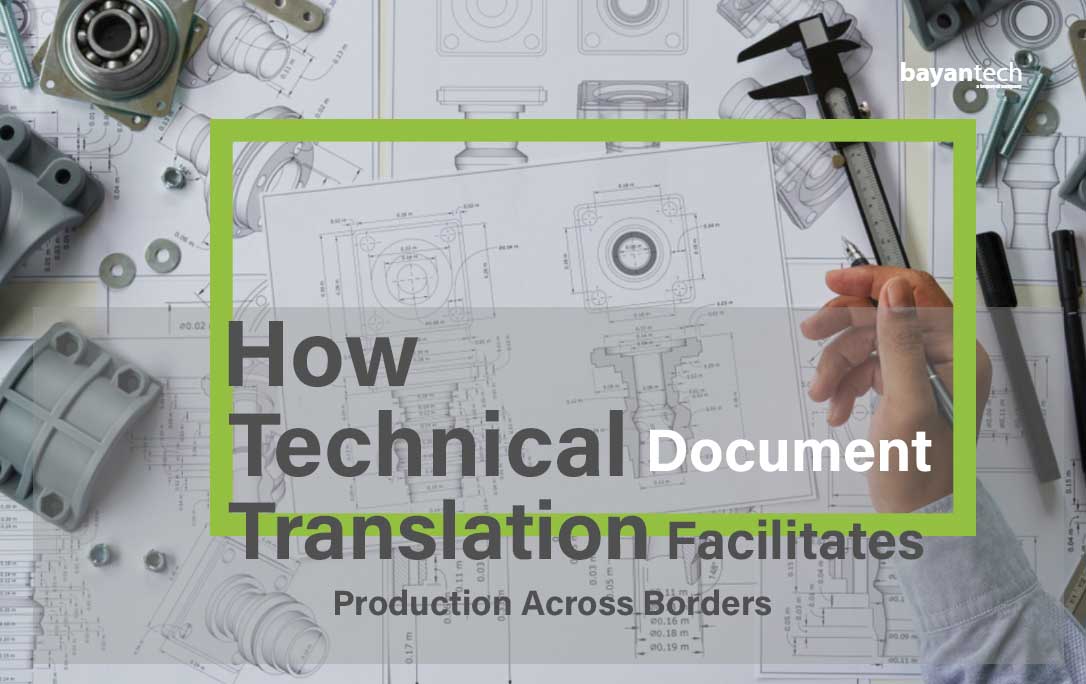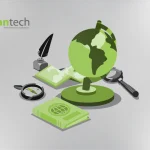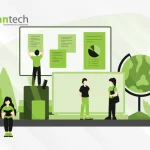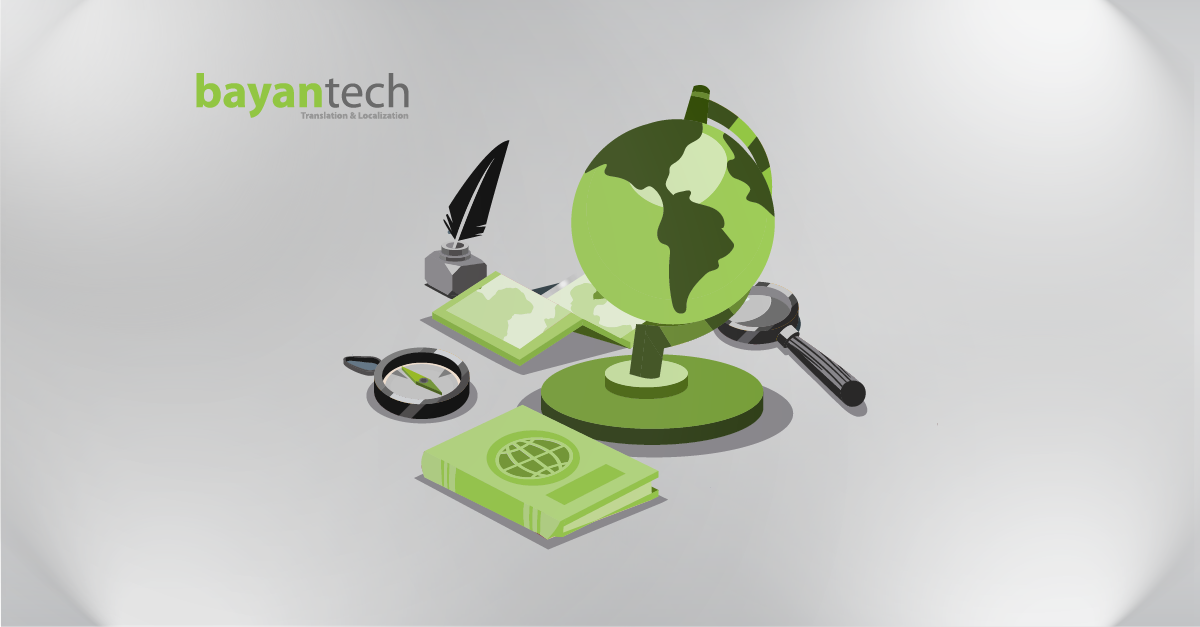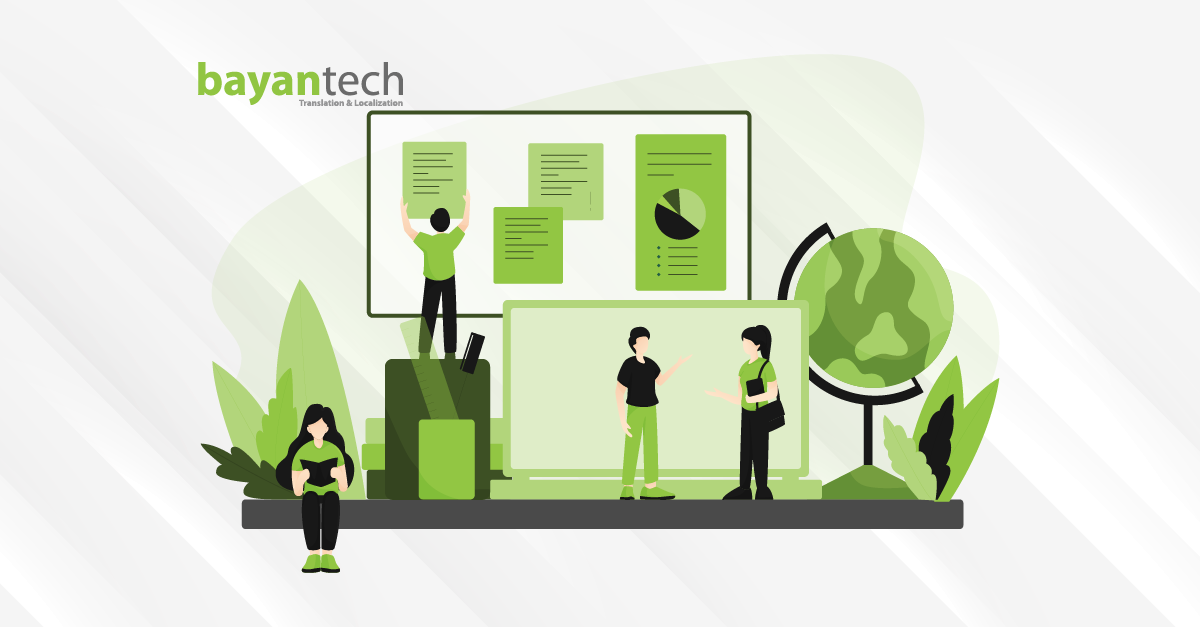According to 2018 research by PwC, since 2000, multinational corporations have experienced approximately US$9.2tn in asset growth. And US$6.7tn of that growth has come from foreign affiliates.

International supply chains, subsidiaries, and international distribution partnerships have been at the core of value creation strategies for leading companies since the mid-20th Century. And the last two decades of technological and economic development have made international operations more dynamic and effective than ever.
In this post, we’ll examine the role of cross-cultural communication in international supply chains and how technical document translation drives production across borders.
Finally, we’ll share 5 tips for technical document translation and the strategies professional technical document translation companies implement to deliver top results.
But first, let’s define technical document translation.
What Is Technical Document Translation?
Technical translation is a subdiscipline of translation services, dedicated to translating literature and documents that drive and facilitate production processes. Technical document translation is of key importance to any company operating on a global scale.
As such, technical document translation includes a wide array of text, such as:
- Blueprints
- User guides
- Technical drawings
- Patents
- Specification documents
- Engineering literature
- Manuals for machines and tools
- Scientific papers
- Processes handbooks
- Reports
Technical document translation is an extremely delicate process since the translated content provides critical information. A bad quality translation means that safety protocols, instructions, and guides will be hard to understand to foreign stakeholders.
Technical documents are complex to translate because they’re produced by subject-matter specialists who aim to transmit a lot of information in the most simple, clear, and compact way possible. Professional translators know this and stick to this writing principle while ensuring that technical terminology is used accurately.
Technical documents can also be characterized as jargon-heavy. But the fact that a text heavily includes technical terms doesn’t mean that it’s technical by itself. The key difference between technical texts and, for instance, science fiction novels or magazine articles about a consumer product, is the fact that technical texts serve a technological or productive purpose.
Preparing for a Meeting? Pitching Technical Translation within your Organization?
Our technical document translation fact
sheet is the ideal tool for you.
Technical Translation and International Supply Chains
Manufacturing is the cornerstone of the economy for the majority of countries. As both a consequence and a driving force of technological progress, the global manufacturing industry has become extremely complex over the past century.
For example, building a personal computer demands a lot of effort, carried out through dozens of different stages. From mining that obtains the required minerals and petrochemical plants that make the plastic for the casings, to the machines that assemble the parts and the programmers who write the code to make them work. In the last two decades, the trading of intermediate goods (goods that aren’t raw materials but still need to be processed into finished products) has soared to $10 trillion annually.
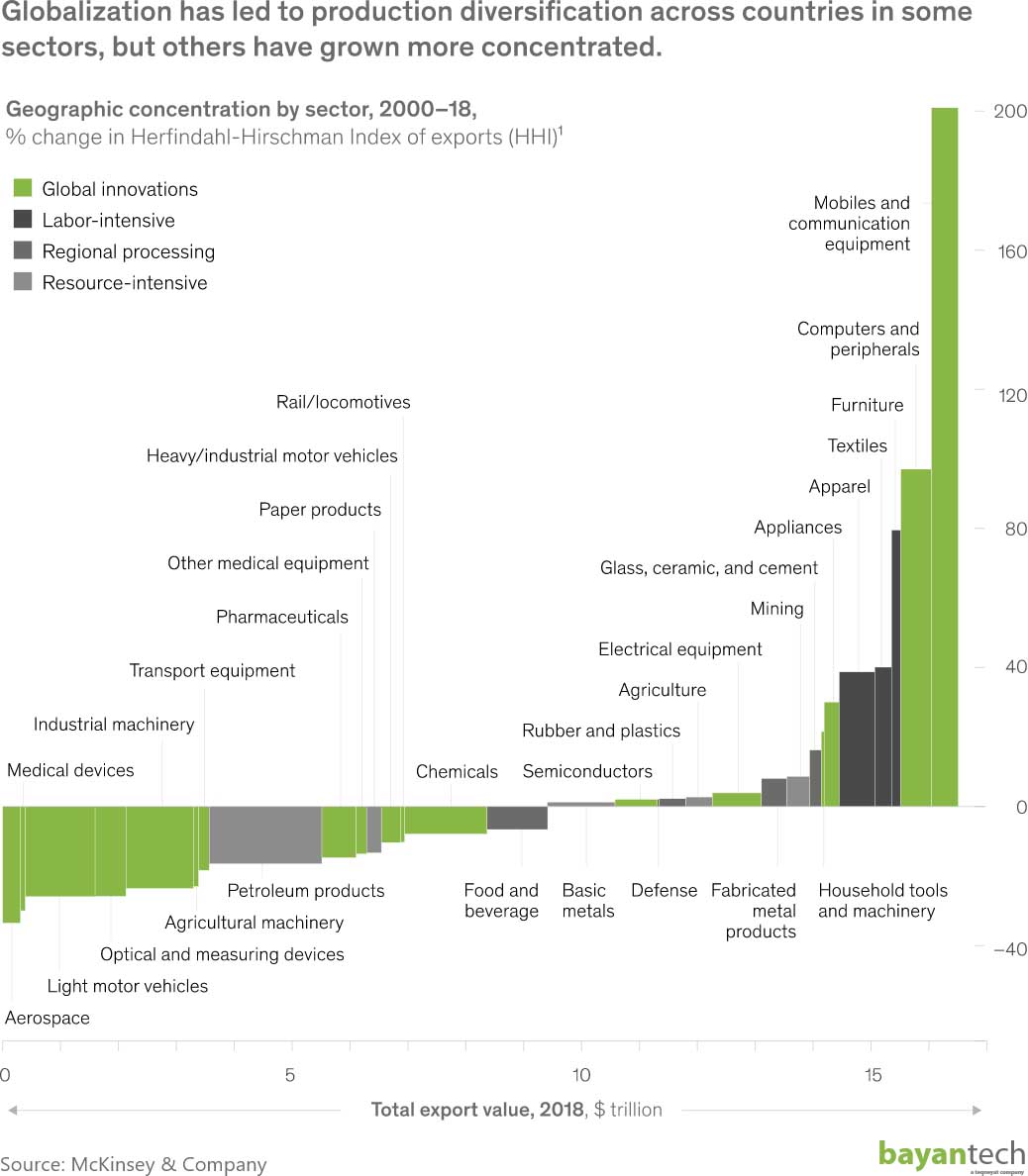
Each stage of the supply chain needs specific technical documentation like user guides for the corresponding equipment; equipment which probably comes from different countries across the globe.
Technical document translation services allow for clear and precise communication between the multilingual productive agents that participate in the manufacturing process. Additionally, it encourages the exchange of technical knowledge between countries, enhancing scientific and technological developments.
5 Key Technical Document Translation Tips
Technical document translation is an arduous task that should leave no room for error. Any mistake in the translation process can manifest as a safety risk or a defective product.
In this section, we’ll share 5 key tips for technical document translation. As technical document translation should only be performed by expert translators, we don’t recommend using these tips to DIY a translation. Instead, they can help you adjust your expectations and discuss your project from an informed perspective.
Measuring Units
Though the vast majority of countries adopted the metric system, there are still a few nations still using the imperial measuring system. One of them is the United States, which held 16% of global manufacturing output by 2018. If you’re dealing with technical documents from the United States or that are meant to be used there, you’ll need to convert all measurements.
Formatting
For a highly effective workflow, translators use easy to handle text formats, such as “.doc”. In many cases, the source text could be a scanned handbook in PDF format, whose text cannot be easily edited. In such cases, manual transcription will be required in order to have an editable text file, although using an OCR scan can help. Regardless, beware that they are not 100% accurate, and they can struggle with poorly rendered text or uncommon writing systems. Manually checking the transcription of the source text is mandatory to avoid errors that may be carried along the translation process.
When dealing with legal documents, plain, word-by-word translation may not suffice. Instead, one may have to restructure the text and even forward the material to a legal consultant.
But all documents will need some type of reformatting, even if it’s just to recreate the original structure, in a way that better fits the content.
Graphics
Don’t forget to translate all text included in the document’s graphics. This is especially important when the document at hand is a patent (each part of the product may have a particular name), or when the document is a series of assembly instructions.
If the quality of the images (schematics or blueprints) isn’t the best, it is a great idea to ask for the original file or hire a specialist to re-do the drawing along with the translated text. This allows for a more detailed text formatting, something that will be needed since different languages have a different use of space.
Regulation
Text formatting, dates, numbers, and symbols are often subject to local regulations, such as the Harmonised standards for the European Union. This is important to consider because many technical documents have some sort of official or bureaucratic purpose. For example, if you’re working on a patent translation, you will have to detail the functioning of your device in the most precise way possible. In the United States, this is regulated by the 35 U.S. Code § 112.
Having an experienced team of technical translators with the ability to comply with local regulations will save your company a lot of time and stress when expanding abroad.
Style, Clarity, Functionality, and Terminology Consistency
As a rule of thumb, the majority of technical documents have an informative and imperative tone. This means that there is no room for ambiguities and twisted syntax. Remember that the target audience can be an administrative employee or a machine operator, so producing unclear documentation can slow down your production process or prevent your company from achieving unified standards and clear expectations.
Technical writers tend to set terminology management and consistent style as top priorities. This can be facilitated by the creation and application of style guidelines.
When sending your documents to a language services provider, it’s wise to attach these reference documents.

How Translation Companies Deliver High-Quality Document Translations
Now that we’ve covered what mistakes a language services provider will work to prevent, let’s take a look at how industry-leading professionals do to navigate the complexities of technical document translation and succeed.
Strategic Automation
As we pointed out previously, technical terminology management has to be consistent and in tune with the source text. Additionally, many technical documents are structured to be formulaic and repetitive. That’s why a leading language services provider will automate repetitive tasks.
This, however, doesn’t eliminate the need for a skilled translator or translation team with a high level of expertise in the subject matter. Using machine translation requires a lot of preparation. For instance, it involves feeding the tool with translation memories, glossaries and other “training material”. And only a human can effectively judge the quality of the final work. Automated tools should never replace translators, as they’re unable to set priorities or understand how a text will come across to a human reader. Instead, machine translation should be used to allocate human resources more effectively.
Style Guides
Style guides guarantee proper terminology management and a consistent style across formats and languages. In most cases, an original style guide is provided by the client, and the language services provider recreates it in the target language to keep the new content faithful to the original.
Some of the aspects of the technical document that a style guide should address are:
- Preferred specific terminology
- Abbreviations and acronyms
- Capitalization conventions
- Dates and currency formats
- Product-specific terminology
- Modes of addressing the reader
- Manuals for machines and tools
- Tone and registry
Experts / Consultants
Seeking the advice of Subject Matter Experts (SME) can enhance the output quality of a translation. In fact, many companies use their own engineers to elaborate translations and instruction manuals, as they have unparalleled knowledge of technical jargon.
Companies that hire engineers for technical translations often believe that, while they may not be experts in a language pair, technical documents aren’t extremely complicated for them, so modest language proficiency can do the job.
But sometimes this leads to translations that, while technically accurate, are difficult to read and fail to achieve their goal. Here’s where the help of professional translators can make the difference between a poorly written text and a useful technical document. Remember that it’s not only the presence of technical terminology that makes them a technical document but also the purpose it serves in a productive process.
On some occasions, professional translators will work together with an SME to clarify potentially confusing aspects of the source text and elaborate a translation that’s both precise and accessible.
Sign up to our newsletter to receive the latest blogs and news.
Communication with Clients
Companies that excel in their industry always have good communication with their clients. This is especially true for translation companies offering technical translation services.
Technical translation has the core goal of bridging communication gaps between diversely skilled, multicultural, and multilingual audiences. Both translators and clients can reap the benefits of a close partnership, in all stages of the translation process. Let’s refer back to the aforementioned example of a positive feedback loop between experts and translators. The clients can also provide better context for the project, paving the way for the translation team to achieve the desired goals.
It’s always a good idea to pick a company with a good disposition to answer all your questions and truly involve you in the translation process.
Quality Assurance and Project Management
It cannot be stressed enough that mistakes in technical document translation can put lives at risk.
A poorly translated emergency protocol or material safety data sheet could have devastating consequences.
Therefore, in technical translation, quality assurance becomes absolutely central. Leading translation companies will have experts, procedures, and tools that verify the accuracy of the output.
But regardless of how technology-driven a translation company is, it’ll be down to the team and the project manager to constantly revise and refine the translation.
For instance, structuring the translation process as a 3-EYE TEP guarantees that there are at least two initial barriers to catch translation and formatting errors.
The 3-EYE TEP (translation, editing, and proofreading) process involves three different linguists in the initial stages of the document translation. One will translate, another professional will edit, and a third one will verify that the final, formatted document is precise.
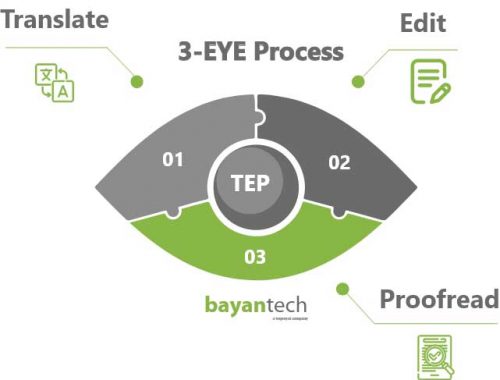
Desktop Publishing
The translation process will most often involve some type of graphic design or desktop publishing process. Not only because handbooks, brochures, and other internal documents should comply with your company’s branding guidelines. But also because reintegrating the content into your desired format may take more than copying and pasting. This is especially the case when translation across writing systems.
A text that was originally in Arabic, for instance, and was accurately translated into Spanish will need an overhaul because the way Arabic script is integrated into documents is very different from the way Spanish text is.
Desktop publishing can also be seized as an opportunity to reconsider some graphics or images in the document, so they’re more evocative for the translation’s target reader.
An Expert Language Partner
At bayantech, we’re the language partner of choice of some of the world’s leading companies, such as Samsung and Canon. We are a translation company with almost two decades of industry experience, we provide technical document translation and related solutions with unparalleled attention to detail and cost-efficiency.
You shouldn’t have to worry about technical document translation challenges. Expand your operations, communicate with foreign partners, and streamline your production with our professional translation services for manufacturing.

